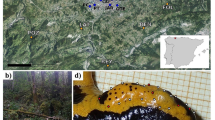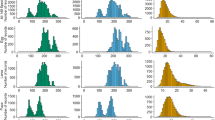Abstract
Life history variations among 27 populations of the grasshopper Chorthippus brunneus from around the British Isles were examined under laboratory conditions over three generations. Multiple-regression analysis was used to examine the relationship between grasshopper life histories and the climates of their ancestral sites. Grasshoppers from cooler sites were heavier at hatching. Grasshoppers from northern sites grew faster and developed through fewer instars, attaining adulthood earlier, at the expense of adult size. Depending on the measure of adult size used, adults were larger in warmer, sunnier or more southerly locations. Ecotypic differentiation is probably widespread among animals as it is among plants, though it is more rarely demonstrated by zoological studies, especially over the wide geographical scale covered here. Evidence from regression analysis supports the hypothesis that ecotypic differentiation in C. brunneus is an evolutionary response to climatic variation. The existence of intraspecific genetic diversity for climatic adaptations has implications for biodiversity conservation and the understanding of biotic responses to climatic change. It deserves wider recognition.
Similar content being viewed by others
Author information
Authors and Affiliations
Additional information
Received: 5 October 1998 / Accepted: 30 June 1999
Rights and permissions
About this article
Cite this article
Telfer, M., Hassall, M. Ecotypic differentiation in the grasshopper Chorthippus brunneus: life history varies in relation to climate. Oecologia 121, 245–254 (1999). https://doi.org/10.1007/s004420050926
Issue Date:
DOI: https://doi.org/10.1007/s004420050926




